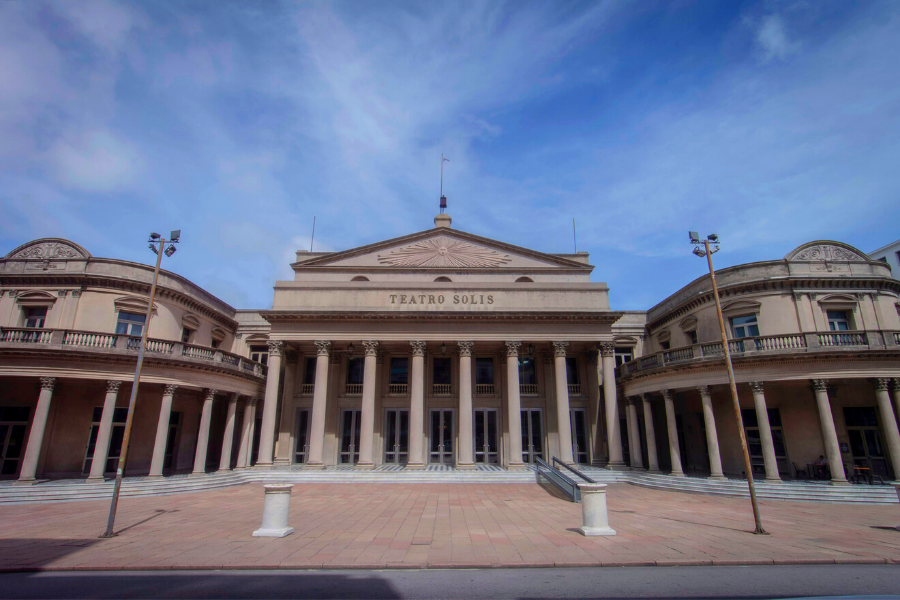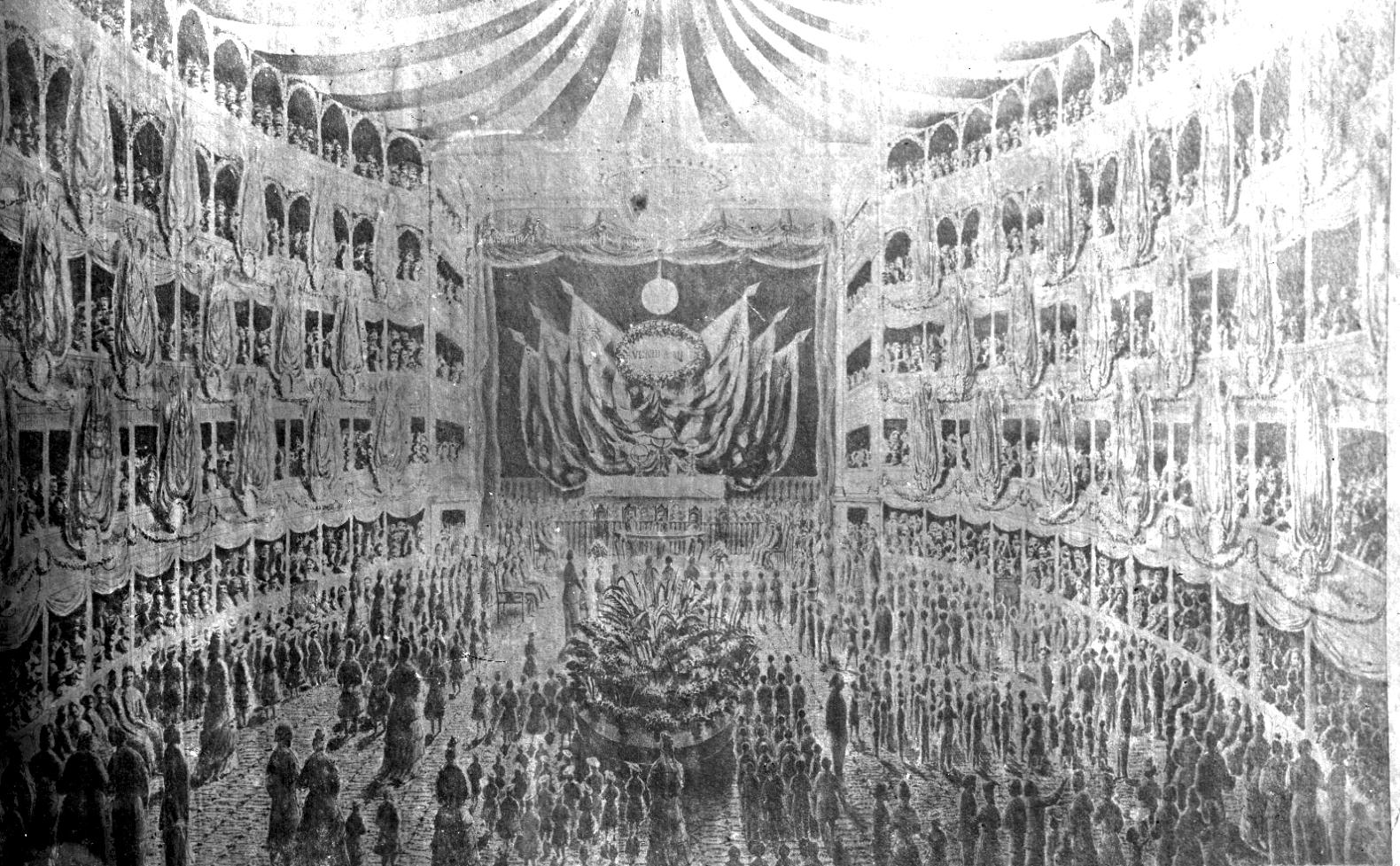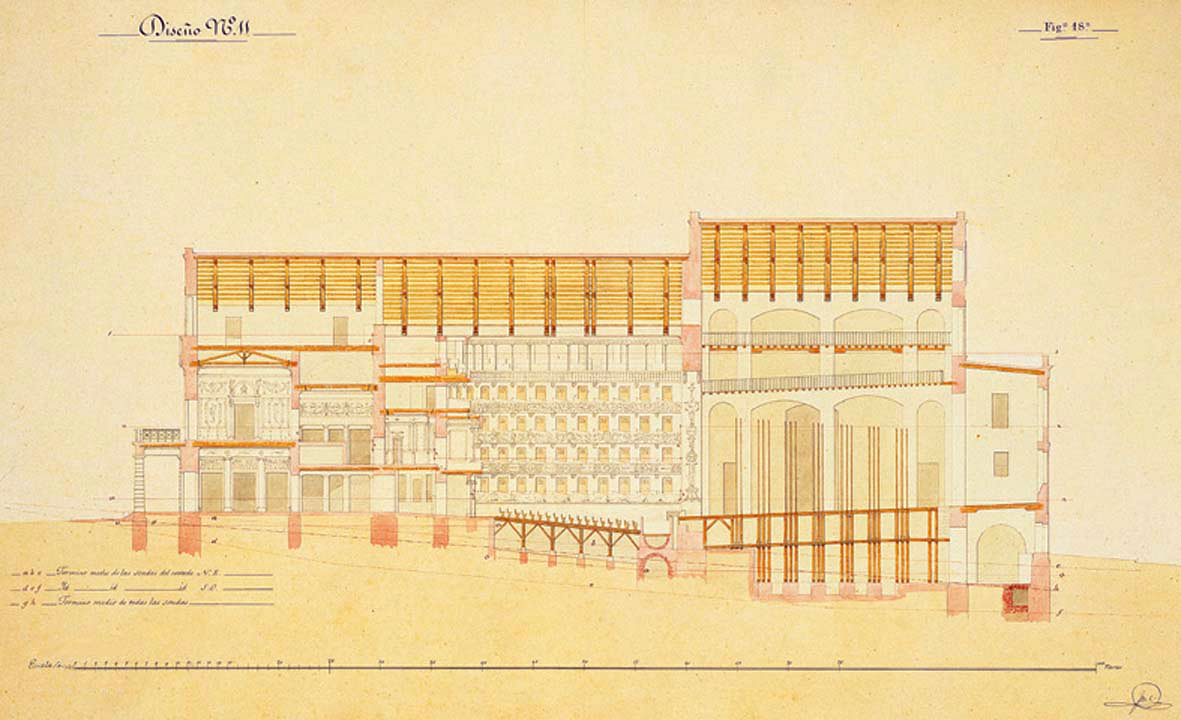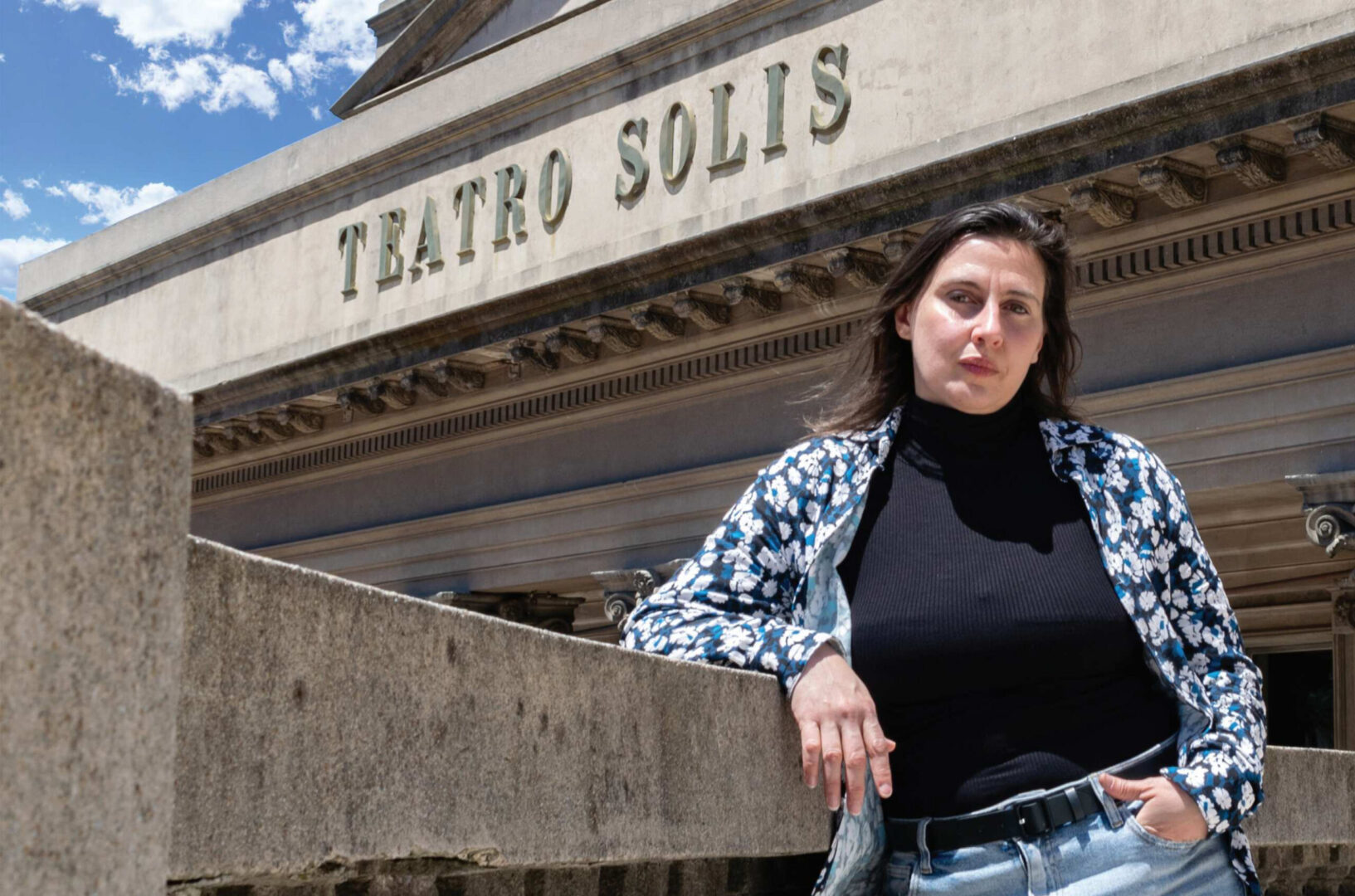Teatro Solís de Montevideo, la voz del patrimonio

La historia del Teatro Solís se cuenta en diferentes etapas. En sus 166 años de historia, este teatro, el más antiguo de Sudamérica, ha sido atravesado por conflictos sociales, adaptaciones en su arquitectura y convergencias entre diferentes estéticas y disciplinas artísticas en su programación. Inaugurado en agosto de 1856, el Solís es un patrimonio histórico de Uruguay en donde se condensan diversidades de disciplinas artísticas -desde la ópera y el teatro hasta la danza y los conciertos- y diversidades de públicos para el desarrollo cultural del país. El teatro, dirigido actualmente por Malena Muyala, mantiene vivas la identidad del país y la idea original de su concepción: satisfacer la necesidad indispensable para una sociedad.
por Álvaro Molina R.
La noche del 25 de agosto de 1856, en la inauguración del Teatro Solís de Montevideo, el público estaba expectante. La jornada tenía un significado especial. Ese día Uruguay celebraba su 31° aniversario de la declaración de su independencia.
El frío del invierno no impidió que la gente se agolpara en la boletería del teatro. Varios de los asistentes se empujaban intentando comprar una entrada de último minuto. El teatro tenía una capacidad para 1.584 personas sentadas, pero se habían vendido más de 2.500 entradas para la gala de apertura.
Quienes habían logrado conseguir un boleto corrieron raudamente por los pasillos y escaleras del Solís, escena que según cronistas de la época generó un estruendo como de estampida. Mientras, afuera la multitud estaba ansiosa y tensa. Por órdenes de la gerencia del teatro, la boletería debió cerrar y los funcionarios temían que el caos originara una revuelta.
Cualquier amenaza de disturbios fue disipada poco antes de las 8 de la tarde, cuando la carroza presidencial llegó al teatro. Ordenado y solemne, el directorio del Solís, liderado por Juan Miguel Martínez, enfiló hacia el foyer para recibir a Gabriel Antonio Pereira, presidente de Uruguay en ese entonces.
Según la investigadora uruguaya Susana Salgado -autora del libro El Teatro Solís: 150 años de ópera, concierto y ballet-, la inauguración del teatro “fue más que una noche de gala, más que una celebración patriótica”.
Cuando bajaron las luces de la sala principal, apareció en el escenario Sofía Vera-Lorini para cantar el himno nacional. Acto seguido, el conductor italiano Luigi Preti levantó su batuta sobre la orquesta. Finalizado el himno, comenzó el espectáculo principal: Ernani, de Giuseppe Verdi, fue la ópera seleccionada para acompañar el nacimiento del Solís.
“Una vez que la música inundó la sala, nació un nuevo teatro: el Teatro Solís”, añade Salgado en su libro. Con más de 150 años de vida, el Solís continúa escribiendo parte de la historia cultural de Uruguay.

Ilustración de Jesús Cubela para el Teatro Solís de 1904. Foto: Archivo del Museo Histórico Cabildo de Montevideo.
Una “necesidad indispensable” para la sociedad uruguaya
El Teatro Solís se ubica en el número 678 de la calle Buenos Aires, en pleno casco histórico de Montevideo, también conocido como el barrio Ciudad Vieja. Tras su fachada clásica, con reminiscencias al Teatro Carlo Felice de Génova, el edificio alberga tres salas de espectáculos, una sala de proyecciones y la Sala de Exposiciones Estela Medina, en honor a la destacada actriz uruguaya.
Este escenario es el hogar de los cuerpos estables de la Comedia Nacional -creada en 1942-, la Orquesta Filarmónica de Montevideo -cuyo debut fue en 1956- y la Banda Sinfónica de Montevideo, el elenco más antiguo de Uruguay, creado en 1907.
El proyecto original del Solís se remonta a la primera mitad del siglo XIX, cuando se formó una sociedad de accionistas con el objetivo de construir y administrar un teatro. En 1840, el naciente Estado Oriental del Uruguay buscó proveer a sus ciudadanos de un “teatro que esté en armonía con la prosperidad y riqueza de la República”. El teatro debía satisfacer “una necesidad indispensable para nuestra sociedad, a la altura que ha llegado su ilustración y comercio”.
En 1840, el arquitecto modenés Carlo Zucchi fue quien dio el primer paso en concebir la infraestructura y disposición del teatro. La idea original del denominado “proyecto Zucchi” consideraba espacios generosos, en un orden que complementaría la ubicación con la arquitectura del teatro. Las ambiciones de Zucchi, sin embargo, no tendrían salida en la comisión a cargo de financiar el teatro.
“El proyecto de Zucchi era magnífico, pero completamente irreal desde el punto de vista financiero”, comenta la académica Susana Salgado en su libro El Teatro Solís: 150 años de ópera, concierto y ballet.
Zucchi debió dar un paso al costado por la inviabilidad económica de su proyecto. Salió de escena molesto y cobrando por sus servicios prestados, a lo que la Comisión Directiva respondió, sin tapujos, que la idea del arquitecto italiano no siguió los lineamientos necesarios. Luego de la frustración de Zucchi, quien tomó la dirección arquitectónica del proyecto fue Francisco Javier de Garmendia. La misión de Garmendia sería adaptar los planes del teatro de acuerdo con las posibilidades económicas del país. No obstante, el proyecto se encontraría con otro obstáculo, esta vez uno que sacudiría a todo el país.
La “Guerra Grande” y el nacimiento de un teatro
A inicios de la década de 1840 se desencadenó la llamada “Guerra Grande”, un sangriento conflicto civil cuyas consecuencias catastróficas diezmaron a la sociedad y economía uruguayas. El país estaba dividido entre dos gobiernos, cada uno arrogándose la legitimidad de su administración. Entre 1843 y 1851, Uruguay estuvo en estado de guerra, atravesado por ejércitos nacionales, franceses, argentinos, vascos españoles e italianos, sumado a la intervención brasileña para la resolución del conflicto.
El 8 de octubre de 1851 finalmente se firmó la paz. El país se encontró con un escenario aciago, virtualmente en ruinas, azotado por la pobreza, las deudas externas, el analfabetismo y un hundimiento financiero.
El proyecto del Teatro Solís también sufrió las consecuencias del conflicto. La construcción de los planos adaptados por el arquitecto Garmendia había comenzado en 1842, pero el estallido de la guerra obligó a paralizar las obras al año siguiente. En 1854, tras una redistribución de las acciones y la definición de algunos ajustes en la infraestructura, la Comisión Directiva del proyecto tenía otra tarea: ¿qué nombre darle al teatro?

Detalle del piso damero en los pasillos del Teatro Solís. Foto: Difusión Teatro Solís / Santiago Bouzas.
La primera opción de nombre fue Teatro de la Empresa, una resolución pragmática por parte de la comitiva. Tanto algunos accionistas como la prensa uruguaya pidieron reconsiderar el tema, debía existir una alternativa más identitaria. Francisco Gómez, miembro de la Comisión Directiva, propuso Teatro Solís para conmemorar al navegante Juan Díaz de Solís, el primer europeo -aún no se resuelve si el explorador era de origen castellano o portugués- en llegar al Río de la Plata, en 1516.
El episodio de la inauguración del Teatro Solís, aquella noche del 25 de 1856, se resume simbólicamente con los versos que el poeta Francisco Acuña de Figueroa escribió para la ocasión, recitados por Heraclio Fajardo instalado la mitad de la orquesta:
“Ora puedes, orgullosa
Por tu digno coliseo
Competir, Montevideo
Con Venecia y con París”
Los versos del poeta volvieron a hacer eco 50 años después, cuando el Solís celebró sus cinco décadas de existencia con un concierto bajo la batuta del conductor italiano Arturo Toscanini.
“La gran meca” de la cultura en Uruguay
Según el expresidente uruguayo Julio María Sanguinetti, la vida social y cultural de Uruguay es indisociable de la influencia que ha tenido el Solís en sus más de 150 años de existencia.
Por el escenario del teatro han subido nombres como el tenor italiano Enrico Caruso, la soprano Luisa Tetrazzini, los pianistas Arthur Rubinstein y Claudio Arrau, el bailarín Vaslav Nijinsky (quien tuvo su última actuación en el Solís, en octubre de 1917), el director Alexander Smallens, las actrices Sarah Bernhardt y Vivien Leigh, entre muchos otros y otras artistas de renombre mundial.

La zarzuela «La del manojo de rosas», de Pablo Sorozábal, cerró la temporada lírica 2022 del Teatro Solís. Foto: Difusión Teatro Solís / Santiago Bouzas.
El orgullo de este teatro, patrimonio histórico de Uruguay, es la Sala Principal, coronada por una araña de cristal de Bacaratt de 500 kilogramos, un plafón ilustrado en su centro y un fresco con figuras mitológicas realizado al óleo sobre el proscenio.
Desde 2020, el Teatro Solís es dirigido por Malena Muyala, quien se acercó al teatro en su natal ciudad de San José. “Yo sabía desde niña que había un teatro referente mayor a ese que era ‘mi teatro’ -Teatro Macció en San José-, que era aquel que estaba en Montevideo. No hay con quien hables en el interior del país que no diga que el Solís es la gran meca, la gran referencia”, señaló Muyala en una reciente entrevista a la Revista Dossier.
En 1937, el Teatro Solís fue adquirido por el Gobierno departamental de Montevideo. Bajo esta nueva administración se dieron las primeras políticas culturales públicas de la capital uruguaya. El Solís se redefinió con el objetivo de mantenerlo como «el corazón de la ciudad» con una programación abierta a todos los géneros y disciplinas artísticas.
«Estoy cerrando el plan estratégico en el que se buscará linkear con la comunidad», señaló Muyala en una entrevista de 2021 para la Radio Sarandí de Uruguay. «Queremos que el teatro vaya a los barrios, pero no dar por sentado qué es lo que la gente quiere y también tener un teatro con puertas abiertas, que te invite a entrar e involucrarte», indicó en esa ocasión.
La programación del teatro actualmente recibe espectáculos de diferentes áreas y disciplinas artísticas como la danza, la ópera -siendo la zarzuela La del manojo de rosas, de Pablo Sorozábal, una de las últimas producciones- y el teatro, pero también abre sus escenarios para presentaciones de músicos populares uruguayos. Mediante esta oferta cultural, abierta e inclusiva, el Teatro Solís busca mantenerse como referente para la vida artística de Uruguay.








